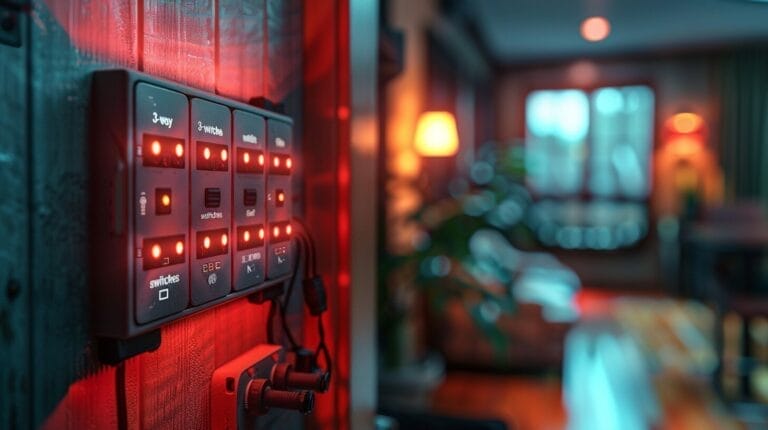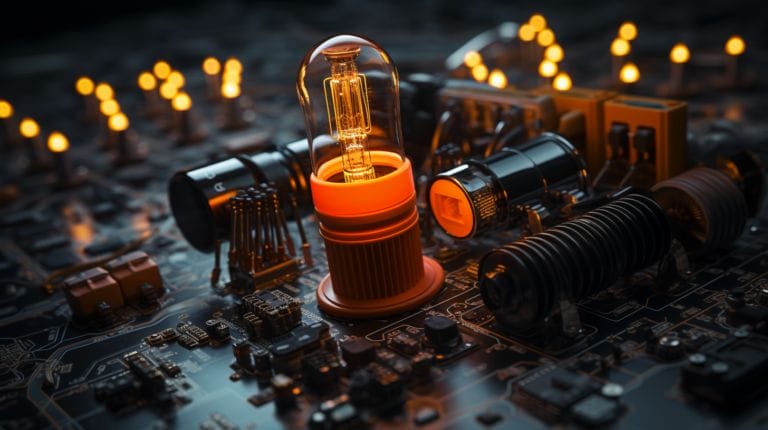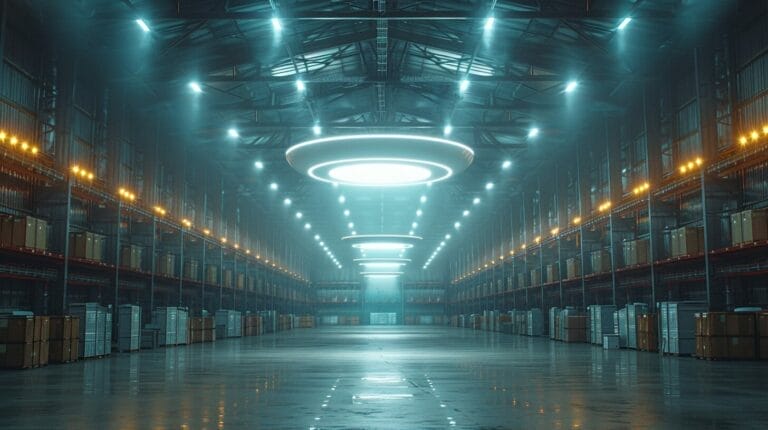Parking Lot Lighting Standards: Illuminating Safe Spaces
As we navigate the world of parking lot lighting standards, it becomes evident that our focus on safety and security is paramount. The intricate dance between illuminating vast spaces while being energy-efficient is a challenge many face. But what if I told you there’s a fine balance we can strike, shedding light on the path ahead without compromising on efficiency or safety?
Let’s explore how we can create safe havens in the darkness of parking lots, where light not only illuminates but also guarantees peace of mind for all who traverse these spaces.
Key Takeaways
- Meeting lighting standards ensures safety and security in parking lots.
- LED lights offer energy efficiency and longevity for cost-effective solutions.
- Strategic placement of fixtures optimizes coverage and minimizes glare.
- Compliance with local regulations is crucial to avoid light pollution and trespass.
- Consider motion sensors and smart controls for enhanced energy savings and security.
Understanding the Importance of Parking Lot Lighting Standards

In ensuring the safety and security of parking lots, understanding the importance of meeting lighting standards is vital. The layout of your parking lot plays a critical role in determining the number of foot-candles (fc) required to maintain visibility and safety. To comply with local and national regulations, it’s imperative to make sure that the minimum light levels are met throughout the entire parking area.
Implementing an efficient lighting solution not only enhances visibility for drivers and pedestrians but also minimizes light trespass and glare. By strategically placing fixtures and utilizing technologies such as motion sensors and timers, you can optimize energy usage and reduce light pollution.
Choosing the right fixtures and bulbs can have a significant impact on the overall effectiveness of your lighting system. LED lights, for example, offer longevity and energy efficiency, making them a popular choice for parking lot illumination. Prioritizing lighting standards not only enhances safety but also demonstrates a commitment to creating well-lit and secure parking spaces.
A Comprehensive Guide to Parking Lot Lighting Requirements

Understanding the specific lighting requirements for parking lots involves considering factors such as minimum and maximum lighting levels, special considerations for disabled parking spaces, and adhering to IESNA standards.
When determining the amount of light needed, LED parking lot lights are a popular choice due to their energy efficiency and longevity.
The layout of your parking lot plays an important role in ensuring adequate illumination. IES recommends a uniform distribution of light to avoid dark spots and guarantee the safety of pedestrians and drivers alike.
It’s essential to strategically place lighting fixtures to minimize glare and shadows, especially in areas with disabled parking spaces.
Designing Your Parking Lot Lighting: Key Considerations

When designing your parking lot lighting, it is crucial to consider key factors such as achieving uniform lighting distribution with LED lights, incorporating cost-effective and energy-efficient solutions, and balancing adequate lighting with light trespass concerns. LED options provide excellent uniformity and energy efficiency compared to traditional metal halide lights.
To guarantee proper illumination, consider the lumen output of the fixtures in relation to the size and layout of your parking lot. Installing full cutoff fixtures can help minimize light pollution and glare, enhancing safety and visibility for both drivers and pedestrians.
Additionally, strategically placing light poles can optimize coverage while reducing the number of fixtures needed, contributing to a more cost-effective solution. By carefully considering these aspects in your parking lot lighting design, you can create a well-lit and safe environment for all users.
| Key Considerations | Details |
|---|---|
| LED Options | Provide uniform lighting and energy efficiency |
| Lumen Output | Match fixture output with parking lot size |
| Full Cutoff | Reduce light pollution and glare |
| Light Pole Placement | Optimize coverage and reduce fixture requirement |
| Parking Lighting | Balance safety, visibility, and energy efficiency |
Choosing the Right Light Fixture: LED vs Metal Halide

As we explore the decision between LED and metal halide light fixtures for parking lot illumination, it’s important to understand the distinct advantages each type offers. LEDs are highly efficient, providing bright and uniform illumination while consuming markedly less energy compared to metal halide bulbs. This energy efficiency not only reduces operational costs but also contributes to a more environmentally friendly lighting solution. Additionally, LEDs have a longer lifespan than metal halide bulbs, reducing maintenance needs and ensuring consistent lighting performance over time.
On the other hand, there are instances where the use of metal halide lights may be considered. While LEDs are generally more energy-efficient and have lower maintenance costs, metal halide fixtures can be a cost-effective option for initial installation in some cases. Moreover, some businesses may prefer the light quality produced by metal halide bulbs for specific aesthetic reasons.
When deciding between LEDs and metal halide lights, it’s important to take into account factors such as energy efficiency, cost-effectiveness, and fixture design to determine the most suitable lighting solution for your parking lot.
Parking Lot Lighting Standards and Design

Let’s explore key considerations for integrating motion sensors into your parking lot lighting design. By incorporating lighting controls like motion sensors, you can enhance energy efficiency and security in your parking lot. Motion sensors detect movement and can adjust the light output accordingly, helping to conserve energy when the area isn’t in use while providing ample illumination when needed.
When determining the best mounting height for your parking lot light fixtures, consider factors such as the lumen output, coverage area, and the specific lighting requirements of your space.
Upgrading or retrofitting existing parking lot lights to LED bulbs can greatly reduce maintenance costs and improve overall lighting quality. LED bulbs are known for their longevity and energy efficiency, making them a cost-effective and sustainable lighting solution for parking lots. When upgrading to LED, confirm compatibility with your current fixtures and consider consulting with lighting professionals for a seamless change that maximizes the benefits of LED technology.
Conclusion
To sum up, achieving the best possible outcome for meeting parking lot lighting standards is essential for creating safe and well-lit spaces for drivers and pedestrians.
By following regulations, considering factors like layout design and fixture placement, and choosing energy-efficient LED lights, parking lots can achieve excellent illumination.
Balancing safety, visibility, and energy efficiency is key in designing parking lot lighting that meets standards and enhances overall security.
Let’s illuminate safe spaces together!
Frequently Asked Questions
What are parking lot lighting standards and why are they important?
Parking lot lighting standards refer to specific guidelines and regulations set for the design and installation of lighting in parking areas. Proper lighting is crucial for ensuring safety and security, preventing accidents, and deterring criminal activities.
How can lighting design impact the safety of a parking lot?
Effective lighting design can help create a well-lit environment that enhances visibility, reduces shadows, and increases safety for pedestrians and drivers. It can also deter crime and provide a sense of security for individuals using the parking lot.
What are some key considerations for parking lot lighting design?
Factors to consider include the size and layout of the parking lot, the type of lighting fixtures to be used, the brightness and color temperature of the light, as well as energy efficiency and cost-effectiveness.
How does LED lighting compare to traditional HID lighting for parking lots?
LED lighting is more energy-efficient, longer-lasting, and provides better light quality compared to traditional HID lighting options. LED lights also have lower maintenance costs and offer improved visibility in parking areas.
What is light trespass and how can it be prevented in parking lot lighting?
Light trespass occurs when light spills over into areas where it is not wanted or needed, causing glare and potentially affecting neighboring properties. To prevent light trespass, shielding the light fixtures and directing light only where necessary is crucial.







